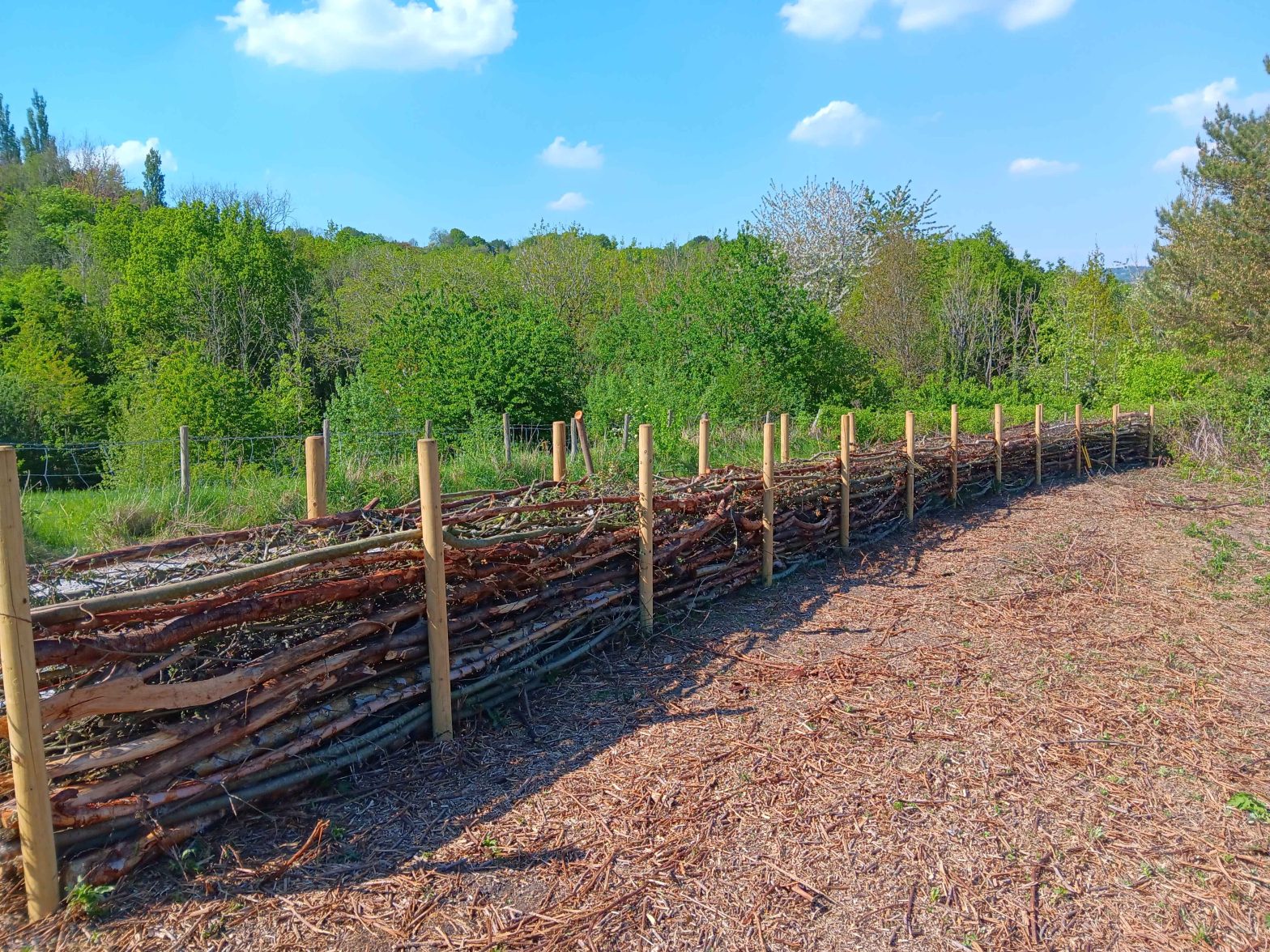“That’ll come in handy one day” was my dad’s favourite line, and the reason he had sheds full of stuff that often did come in handy one day. It’s a mantra we’ll be using regularly at WiseWoods as we try to minimise waste and reuse as much as possible. And what better way to start than with a dead hedge?
What is a dead hedge?
First off, it’s not a hedge that has died! Although you could use branches from a deceased hedge.
A dead hedge is a versatile feature, and you can make it any way you want. Our dead hedge was started with two rows of fence posts, about 2 feet apart.
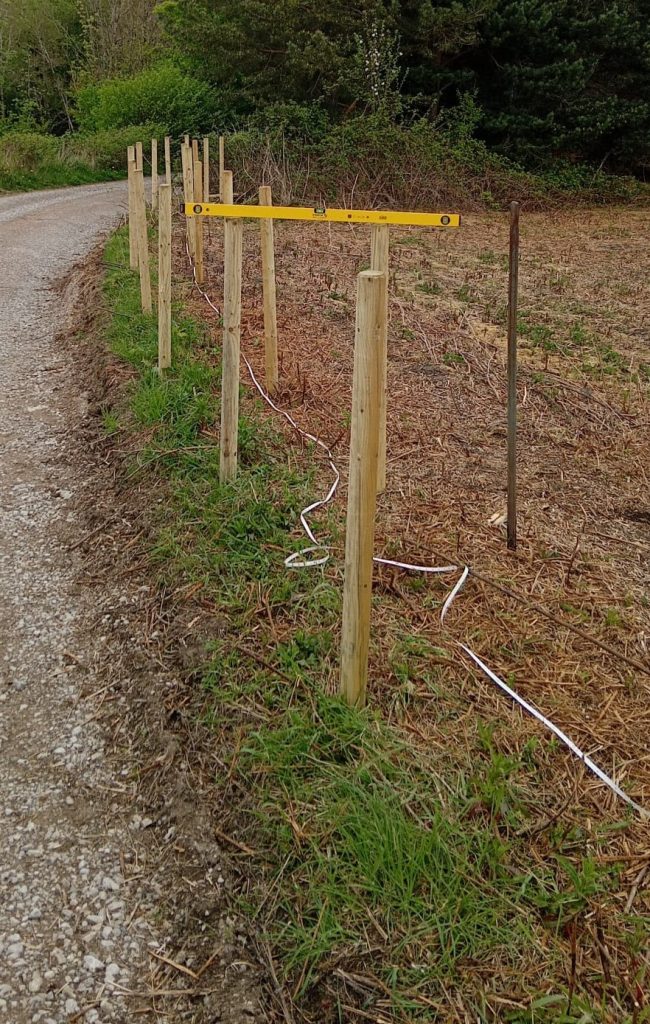
We have then packed the space with fallen dead wood and bits of scrub we had to remove in order to give the tractor sufficient access to cut the brambles in the top field. Larger branches are interwoven to make a sturdy outer edge, and smaller branches are packed into the gaps.
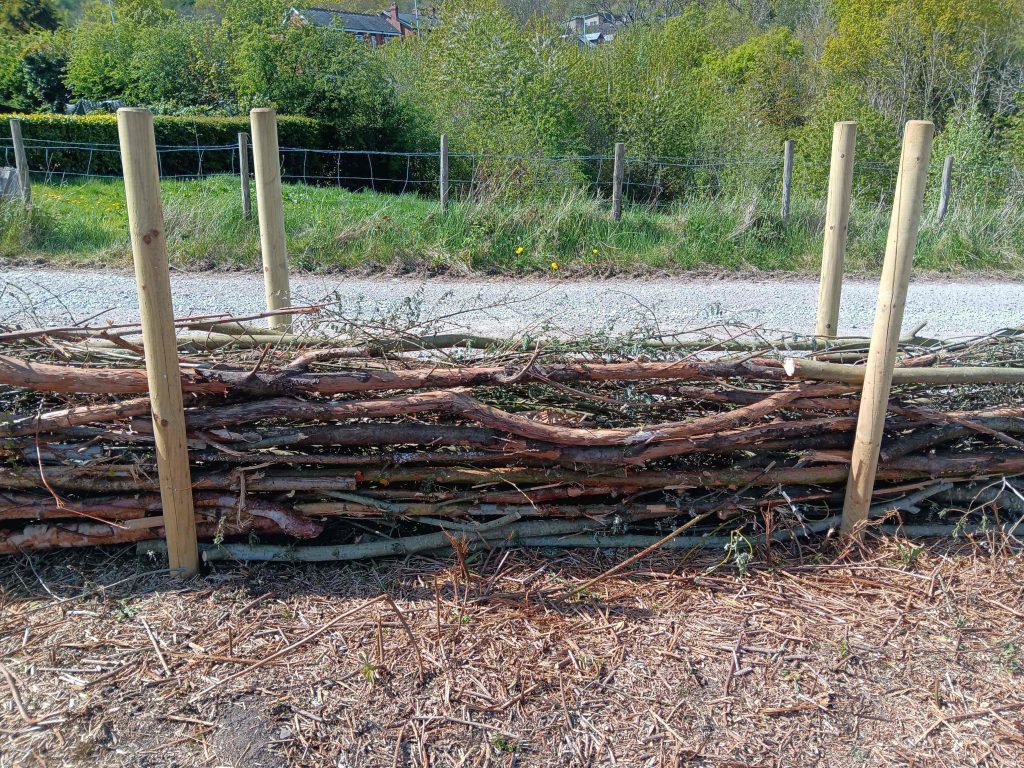
It’s a monster of a dead hedge, 22 metres long and tall and thick enough to withstand a herd of Clydesdales. But dead hedges don’t have to be this substantial. Instead of fence posts, you can just stick smaller branches in the ground and weave branches and twigs between them. We’ll probably make our other dead hedges narrower, as we underestimated how much material was needed to fill it!
What are the benefits of a dead hedge?
A dead hedge is an environmentally friendly way to get rid of fallen or cut branches without burning them or sending them to landfill. The branches will slowly break down and rot, so it offers a permanent way to keep disposing of more branches each year.
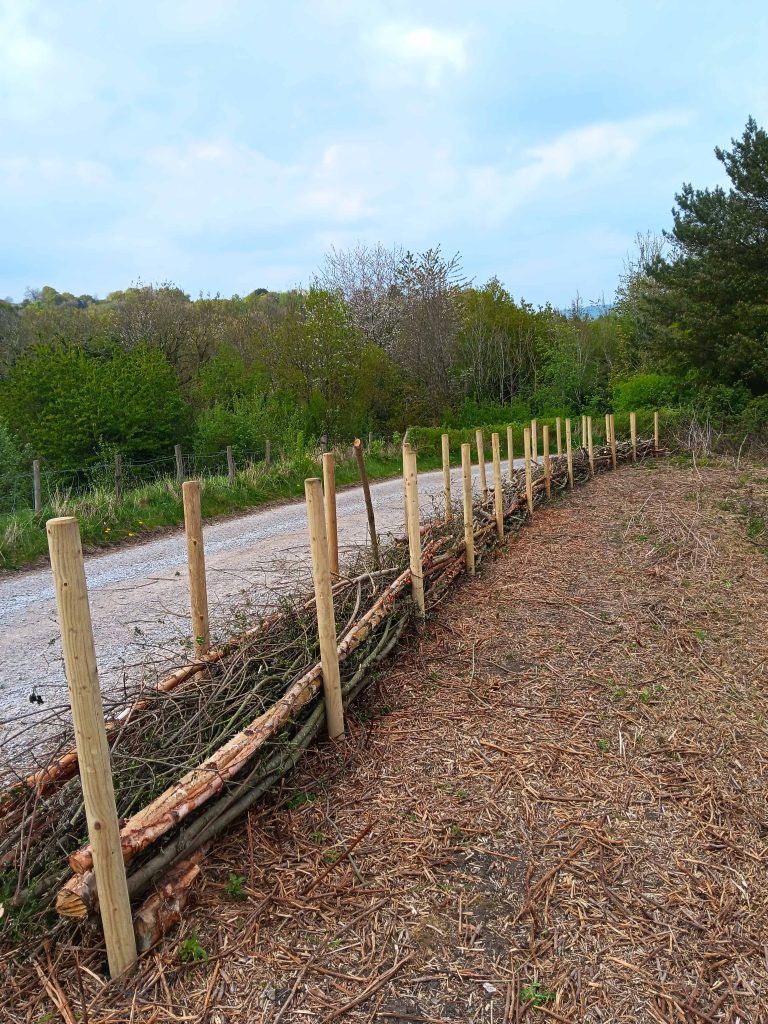
If you love the rustic, natural look, then a dead hedge is a thing of beauty! Garden centres will sell you a woven brush or bamboo screen, but it’s nothing like the real thing. A proper dead hedge is guaranteed to be a talking point.
Wildlife love a dead hedge. Far from being a dead place, our dead hedge will soon be teeming with birds, insects and other small critters. Climbing plants might use it too.
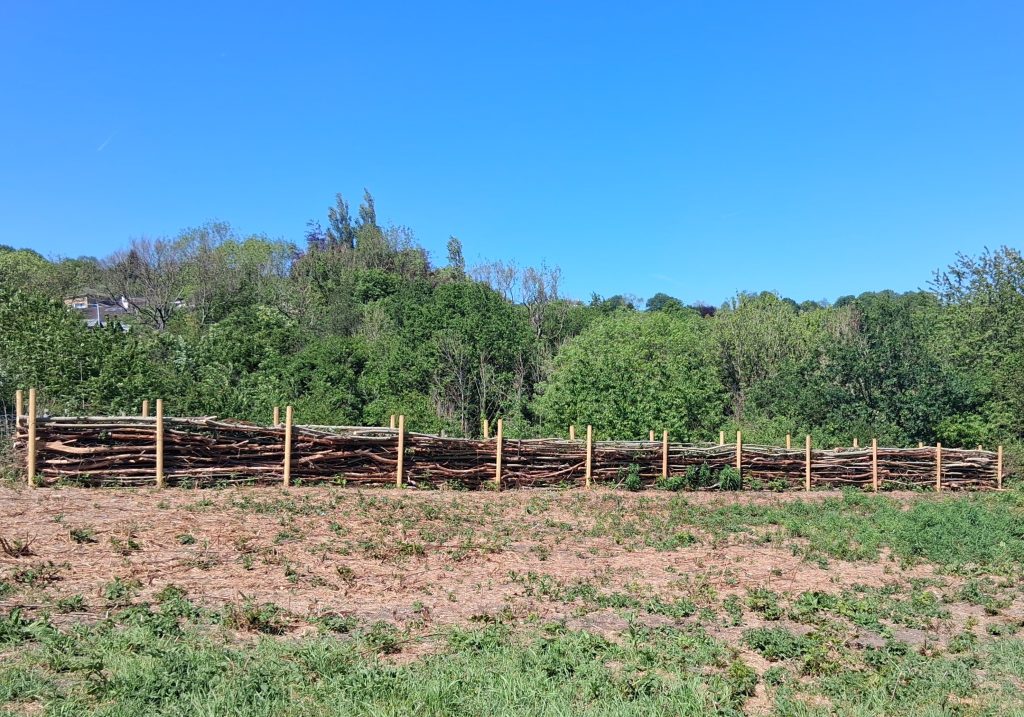
One of the greatest benefits of a dead hedge comes from the process of making it. It’s incredibly therapeutic! Making the hedge keeps you firmly in the present; finding the branches, weaving them together, stuffing the gaps with smaller twigs.
There is a purpose to the task without any pressure. It tests our decision-making without any fear of getting it wrong (there is no right and wrong way with a dead hedge). We can get immense satisfaction from turning a random pile of sticks into a strong and beautiful structure. It’s such a positive activity. Even the most seemingly insignificant small twig has a place and a purpose, contributing to the creation of a new mini ecosystem.
More dead hedges
Our first dead hedge is along the main entrance track, so it needs to be solid for safety reasons. Other dead hedges will be used for inner boundaries, so they don’t need to be so big.
As we explore each area of the woodland, we are gathering dead wood into piles in preparation for the next construction. We’re not moving all the dead wood, of course, because it’s also a valuable home for wildlife on the woodland floor.
Creating a dead hedge is quite time-consuming, especially if the stacks of dead wood are not close to where you want to build! So we’ll be using miles of electric fencing to help us get boundaries started, and then we’ll gradually create dead hedges once we know we’ve got a boundary in the right place.
Volunteers welcome!
If you would like to try your hand at dead hedging, get in touch. We’ll be working on this project for a long time, and all help is welcome.

